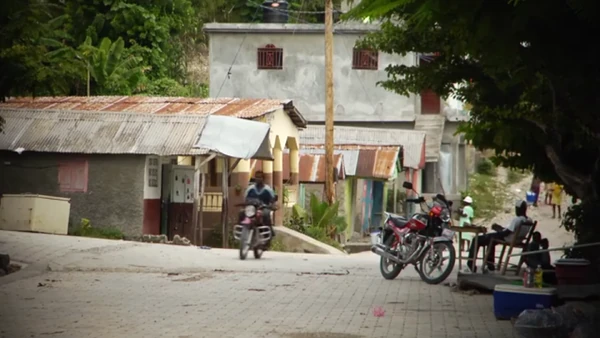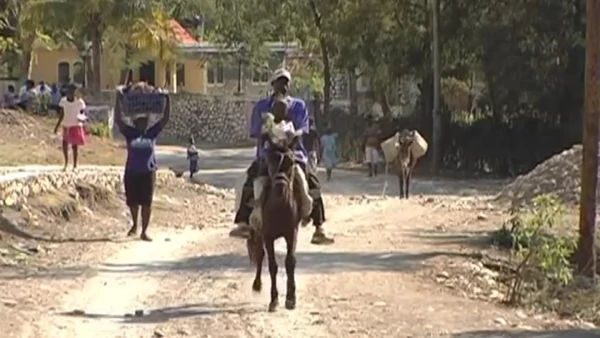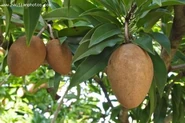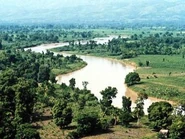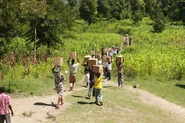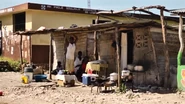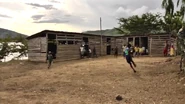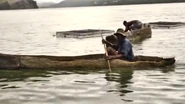Boucan-Carré is a town in the Mirebalais Arrondissement, part of Haiti's Central Department. It is part of the Central Plateau region. The population was 56,028 at the 2015 census.
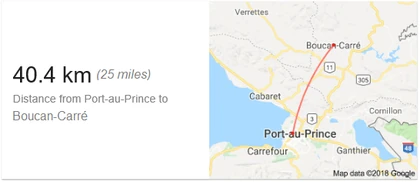
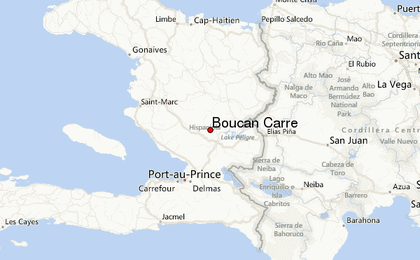
Location in Haiti
About[]
History
The area now known as Boucan-Carré was settled in the early 18th century. Previously known as "Chambeau," Boucan-Carré was founded in 1948, bearing the name of General Rochambeau. It is considerably younger than many of the surrounding towns, as Boucan-Carré's territory was taken from the previously established city of Mirebalais.
In time, the 11th communal section of Mirebalais became one of the twelve communes of the Central department. Raised to the rank of district in 1946 by Dijon Jean Gilles, native of the area and who was Deputy of Mirebalais, Boucan-Carré was then elevated to the rank of commune in April 1985. It is directed by a Municipal Council of 3 members chaired by the Mayor.
Geography[]
Boucan-Carré is located at 18.9245° N, 72.1468° W. According to the IHSI, the commune has a total area of 353.63 square kilometers (136.54 mi2), of which, 349.22 square kilomers (98%) of it is rural and 4.41 square kilometers (2%) of it is urban. It is bordered by the municipalities of Maïssade (Upper Central Plateau) to the north, Hinche to the northeast, Thomonde to the east, Lascahobas (Lower Central Plateau), to the southeast, Saut-d'Eau to the southwest, and the Artibonite Department communes of Petite Rivière and La Chapelle to the west. Boucan Carré has three communal secitons and a district. It is further subdivided into at least 93 localities and 12 habitations. It is a landlocked commune.
Boucan-Carré's terrain is a combination of high mountain peaks and steep hollows interspersed with plateaus. The Boucan-Carré River streams through the center of town while agricultural farmlands dot the area.
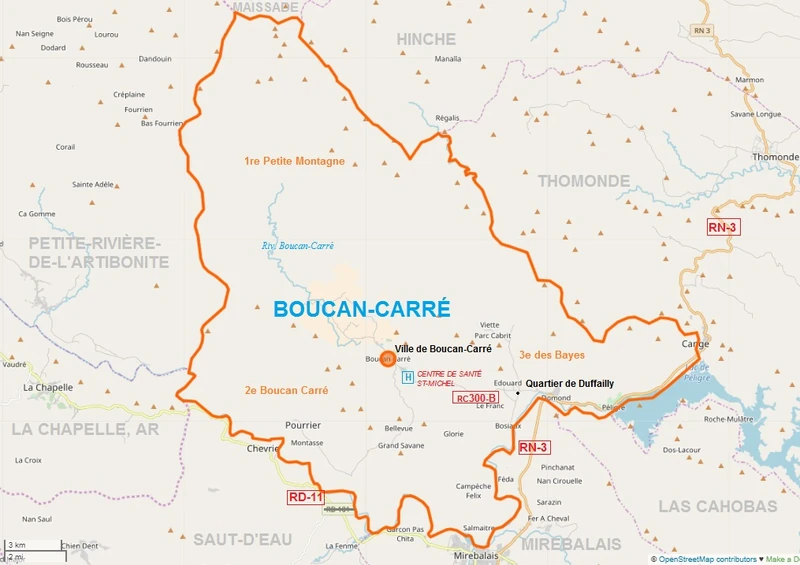
Commune map of Boucan Carré
Neighborhoods
| BCA | Boucan-Carré | 56,028 | |||
|---|---|---|---|---|---|
| VBC | Ville de Boucan Carré | Urban | 1,236 | ||
| Quartier de Duffailly | Urban | 2,568 | |||
| PMO | 1ère Section Petite-Montagne | Rural | 9,962 | Belle Epée, Bouli, Ca Dafirme, Caille Jour, Dual, Eau Confrée, Fond d'enfer, Fond-la Borde, Fond-la Porte, Grand-Ravine, Gros-Cabrit, Grosse-Source, Jacot, Léyan, Nan Chambeau, Nan Chipain, Pengol, Pivereau, Saint-Louis, Ti Montagne, Tourmain, Zaboca. | |
| BCC | 2ème Section Boucan Carré | Rural section | 20,968 | Au Pig, Bajaux, Beau Père, Belbède, Bellevue, Benaco, Blanc, Bodian, Boucan Carré, Ca Choutte, Carrefour Gros Zerbe, Chambal, Corail, Cornel-Noël, Corvelle, Covette, Derma, Duchemin, Dupont, Durocher, Féquière, Fond-Sable, Fontaine, Gordey, Gros Charles, Gros-Mapou, Guillaume, Latie-du-Seau, Mainville, Mislet, Montasse, Nicolas, Pages, Pépin, Pierre-Louis, Pont Mme. Louis-Gapi, Pourrier, Sivol. | |
| BAY | 3ème Section des Bayes | Rural section, qtr | 21,294 | Balandrin, Bosiaux, Boucan-Kola, Bourgougnon, Brouillard, Ca Ibe, Campèche Félix, Débaye, Denizard, Deux Lagon, Domond, Domonique, Dos Pilon, Dufally, Eau Gaillée, Edouard, Fond-d'Enfer, Glorié, Grande-Savane, Gros-Morne, Gumérin, Haut-Baille, Jasmin, Lacheteaux, Le Franc, Mahotière, Manoir, Mont-Bayard, Moreau, Nan Mango, Nan Melton, Orange-Sure, Parc-Cabrit, Péligre, Piton, Rodeau, Saint-Martin, Salmaitre, Savane-la-Garde, Soubier, Ti Toussaint, Ti Jeudi, Viette. |
Demographics[]
Its inhabitants are called Boucancaréen. In 2015, the gender ratio was estimated at 109 men per 100 women. Almost 94% of the municipality's population resided in rural areas. The distribution of the municipality's population by major age group is as follows:
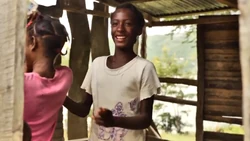
A young student of the town
42% of its population is under 15 years old
53% of its population is aged 15-64
5% of its population is aged 65 and over.
| Year | Population | Change |
|---|---|---|
| 1998 | 35,917 | |
| 2005 | 45,333 | +79% |
| 2009 | 50,952 | +89% |
| 2015 | 56,028 | +91% |
43% of the population are minors under 18.
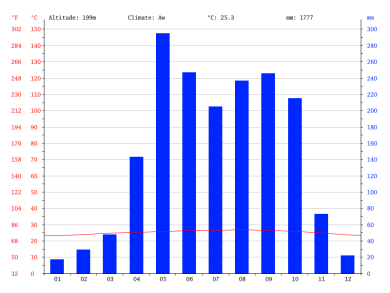
Boucan-Carré climograph
Climate[]
Under the Köppen climate classification Boucan-Carré has a tropical savanna climate (Köppen Aw). Summers are typically rainy, with landslides in the 1st and 3rd sections and flooding in the 2nd. The least amount of rainfall, averaging 17 mm (0.66 in), occurs in January. The month of May, with an average of 295 mm (12 in.), shows the highest amount of rainfall. August is the hottest month of the year. The average temperature is 27°C. (80°F). January is the coldest month, with temperatures averaging 23°C (73°F).
Economy[]
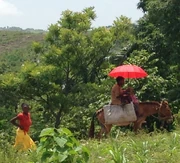
In the hills behind Boucan Carré, avocados are transported to the local market by donkey.
The local economy is based on agriculture, trade, and livestock. There is no restaurant nor bank, but there is a marketing cooperative. Apart from a few small shops, about 19 in number, the town has almost no commercial establishments. There are two depots, two pharmacies and a bookstore. The charcoal industry is a chief means of employment for many residents.
Agriculture and Environment
Agriculture in Boucan Carré consists of corn, millet, sugar cane, pistachio, tobacco, pigeon peas, and beans (particularly in the Petite-Montagne Section). Many food crops such as bananas, sweet potatoes, cassava, yams and malanga are also grown. Some plantations and some fruits are endangered like guava and latanier, for example. Market gardening plants are poorly cultivated although they would develop fairly well in the area, provided there are irrigation facilities and technical assistance from agricultural professionals. The farmers of Boucan Carré also breed big and small livestock. Domond, Péligre, and the other localities bordered by the Artibonite River are areas that are very favorable to aquaculture and agriculture (irrigation).
Zanmi Lasante operates an agricultural program at Boucan Carré with a team of agricultural technicians. This program cares for families and children.
Fish farming
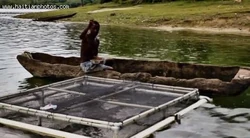
Fish farm in Boucan-Carré
In the town of Boucan-Carré, fish farming is a new way in Haiti. Haiti is a country so plentiful with water but it offers so little income to fisherman. Fish farming like this one in Boucan-Carré is expected to boost income to the fishermen in the region.
Trade
In addition to agriculture, trade is the second activity enabling the working-class community of Boucan-Carré. The main commercial activities are the sale of food, necessities, and livestock. Apart from Fonkoze's credit program, which runs the Ti machann (Small Merchants), shopkeepers are left to their own devices.
For people interested in investing in the area, Boucan Carré remains a virgin zone from a commercial point of view.
The absence of roads in certain areas and the impassability of existing roads are also causes of the deterioration of trade in the commune, trade goes hand-in-hand with transport. Every year, tons of mangoes are rotten under the mango trees while the farmers could arrange to sell them in Port-au-Prince or elsewhere if they had means of transport and it is the same for some of their other productions, especially sweet potato.
Other commercial activity
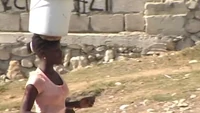
A neighbor of Boucan-Carré
There are no hotels in Boucan-Carré. However, the locals always arrange to welcome friends and visitors. The Boucanais has a sense of hospitality. However, when it is necessary that visitors are accommodated in a hotel, it is possible to book one or more hotel rooms in Mirebalais. For economic and financial infrastructure, the town has five business houses, three credit unions and nearly 58 borlette banks.
Shopping
The main activity in Boucan-Carré is the official market day, which draws merchants from neighboring towns who come to spend the day. On Fridays, throngs of people pour into the town center for market day. At first, the market drew practically no vehicular traffic to this event, but over time, it became overflowed with motorcycles and all-terrain vehicles.
Infrastructure[]
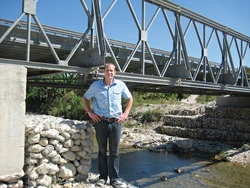
Boucan-Carré's new bridge
Many non-government organizations have come forward to help strengthen Boucan-Carré's infrastructure. Since the early 2000's, U.S.-based NGOs, Haiti Outreach Program, Give Haiti Hope, and Partners in Health, have supported infrastructure development and maintenance. One of its projects, a full-service medical facility, has evolved from a local community clinic.
The United Nations has performed significant road-repair work leading from Port-au-Prince Airport into Chambeau. Upgraded roads have reduced travel time by 50% between Port-au-Prince and Chambeau, from four and a half hours to two.
While Boucan-Carré has experienced steady improvements to its infrastructure over the past decade, the 2010 earthquake delivered a knock-out punch. Thousands of earthquake survivors rushed home to extended family in Boucan-Carré. The influx of people has created a substantial burden on the city's resources and inhabitants. Uncontaminated water is scarce, and the Haitian gourde's decrease in value has made goods and services prohibitively expensive.
Transportation
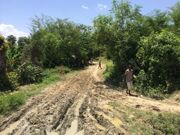
Feyobyen Road in Boucan-Carré
The roads of the municipality of Boucan-Carré are in organic condition. The one connecting the Bayes Section to the town center (Route Domond-Chambeau) is worthy of major development work and parts of the road are impassable during the rainy seasons. Thanks to Digicel, MINUSTAH, Zanmi Lasante and MTPTC, a bridge was built on the Fond d'Enfer River, which solved in half the problems that the population knew how to confront during the rainy seasons. The section connecting the town center to Fèyobyen (Haut-Boucan Carré) requires river crossing at the Boucan Carré River on several levels. The section linking the town center to Bas Boucan Carré (Chambeau-Pouillé) is totally impassable, particularly at the Mont-Bayard level.
From the city to the communal sections, the roads are clay. Rue Grand Chemin connects the city to the second communal section. Route Communale 300-B connects the city to the third communal section and provides access to Route Nationale 3. The roads that connect the communal sections together are paths.
A part of the draw of Boucan-Carré, and one that has been publicized in recent years, is its "ideal" location about halfway between the cities of Mirebalais (Upper Central Plateau) and Hinche (Lower Central Plateau). Travel is facilitated with the newly rebuilt Route Nationale 3. Boucan-Carré is considered part of the Boucle Centre-Artibonite, which also consists of the towns of Hinche and Mirebalais.
Education

Boucan-Carré school children
Boucan-Carré, has about 43 educational institutions. Of this number, there are 37 primary schools, 6 secondary schools, and a literacy center. Educational infrastructure is more present in the rural areas than in center of town, with 33 schools in rural areas versus seven 7 in the urban area. The town center, Dufailly and Cange each have two secondary schools. There are 3 national schools; one in the town center, one in Dufailly and one in Domond-Péligre. The majority of the schools (33) are private.
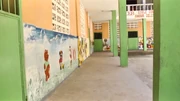
Local Primary school
For the entire population of Boucan Carré, there is only one High School located in the town center with the capacity to accommodate about 300 students. Funding is supported in part by Zanmi Lasante. Some students attend high school in Mirebalais.
Health
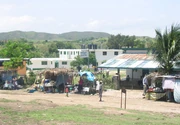
Partners in Health
The Ministry of Public Health and Population is not represented at Boucan Carré. The commune has two hospitals, a public dispensary and a private clinic. The number of technical staff of these four health establishments amounts to sixty-four members including 13 doctors, 17 nurses, 24 auxiliaries, ten matrons, three laboratory technicians and 24 other technicians.
For more than 25 years, Zanmi Lasante has been working in the health field at Boucan Carré and has made a major contribution to improving the living conditions of the population.
In collaboration with the Ministry of Public Health, Zanmi Lasante offers health services to the population of Boucan Carré through the Saint-Michel Health Center located in the town center (Hatte L'Etat). The center has a laboratory, a radiology and a pharmacy. Cases requiring the intervention of a specialist are referred to Cange or Port-au-Prince.
The Bon Sauveur Hospital, which has four basic services, an ophthalmic clinic, and a dental clinic, is in Cange, a village located in the Bayes Section.
Friends of Knoxville, supporting the parish of Saint-Michel de Boucan Carré, have the plan to build a clinic in Pouillé (Bouli), a very important locality of Bas-Boucan Carré - located at the center of the 1st section - to facilitate access to basic health care services.
Utilities
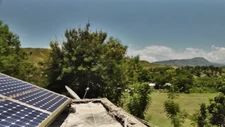
Solar power in Boucan-Carré
For water, the town of Boucan Carré has four rivers, public fountains and seven springs, two of which are collected and distributed. Lake Peligre passes through the third communal section of des Bayes. The town center and several localities (Cange, Dufally, Domond, Péligre) of the 3rd communal section are all electrified.
Electricity
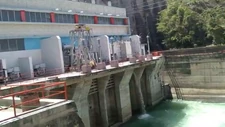
Hydroelectric barrage at Lake Péligre
The aforementioned hydroelecrtic barrage of Péligre is within the boundaries of Boucan Carré in Des Bayes, the 3rd section. The center of the commune had to wait about 60 years to be electrified under the Bellerive-Préval government at the beginning of 2011.
Security
The administrative and judicial infrastructure consists of a tax office, a police station, a sub-police station, a peace court and a civil status office.
Administration[]
As of January 2022
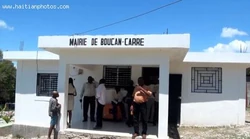
Boucan-Carré town hall
 Delinois Guerrier |
 Marthanite Rich |
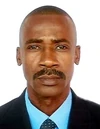 Michelet Gracia |
| Party: PHTK |
Culture[]
Religion
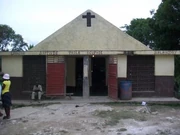
Eglise Baptiste Philadelphie
Boucan Carré is a very religious community. Nearly 76 churches have been inventoried in the commune. Denominations with the largest number of churches are 30 Baptist, 16 Pentecostal, 11 Church of God, and 10 Catholic. Like all regions of the country, the Christian religion (Catholicism and Protestantism) and Vodun are practiced. The municipality of Boucan-Carré is divided into two parishes: Saint-Michel parish of Boucan-Carré covering the 1st and 2nd Section and the parish of Saint-Francis of Assisi Dufailly covering the Bayes Section. These two parishes are subdivided into ten chapels.
The parish of Boucan-Carré celebrates its patron saint every September 29 (Saint Michael the Archangel) and Dufailly every October 4 (Saint Francis of Assisi).
The Protestant Church is also very present, especially the First Baptist Church, under the direction of the Baptist Church of Mirebalais and many other Protestant sects. The presence of the Adventist Church and the Episcopal Church should also be noticed.
Vodun, cultural religion of Haiti, is also very practiced. Even some believers in Catholic and Protestant churches consult a hougan for problems related to superstition and health.
Communication

A rural home in the commune
Boucan Carré is connected to the rest of the world thanks to the antennas of Digicel, Voilà and NATCOM installed in the area.The area is in dire need of a radio station; there are none at the moment. Meanwhile, radio could play a very important role in education, information, and public awareness, as well as in the cultural development of youth.
The municipality at the time of the inventory had no telephone or postal office. In addition, there is no newspaper / magazine.
Leisure
Boucan-Carré with its rivers, its landscape, and its mountains had long attracted visitors, tourists and different personalities. For example, Boucan-Carré was the city of General Rochambeau; traces of the Fort of Rochambeau can be found with its waterfalls in the 1st Section, Petite-Montagne. The center of the commune still bears his name (Chambeau), there is also a locality named " Nan Chambeau".
Boucan-Carré is also a favorable location for jogging and mountain climbing (with its high peaks). Fans of swimming will also find beautiful rivers and particularly, the longest river in the country whose source is Cibao in the Dominican Republic: The Artibonite. A town in the area of great importance and has a tourism potential is Péligre. We must note that the hydroélécrtique Péligre dam is located on the territory of the Boucan Town Square in the third section of Bayes.
Péligre Lake is an artificial lake created in 1956-1957 as a result of the construction of the hydroelectric dam on the Artibonite River. This hydroelectric dam was built by the Corps of the US Army engineers and funded by the bank import-export of US Eximbank (Wikipedia).
Lake Péligre remains still untapped tourist site. The view of the lake is lovely and pleasant. It is a place where you can practice canoeing or waterskiing.
In the town center, behind the Presbytery, there is a recreation space, Mapou-Beach.
Youth Boucan Carré commune are very talented. The paint the town's underestimated cultural scene as poets, storytellers, musicians, and singers.

The local soccer team
In terms of entertainment and leisure, the town has six night clubs, three spaces for playing football (soccer), a public square, and 19 gaguères. In terms of cultural heritage, the commune has about 25 peristyles, a notorious temple, and two tourist sites. One is a fort. Many Hougans and Mambos were also found in the commune.
Organizations
In the field of politics and other organizations, the municipality has six political parties, 24 socio-political organizations, three grassroots organizations, four NGO's, six peasant groups and two women's groups.
World Vision supports real change for children, families, and their community.
Further reading[]

Boucan-Carré's new bridge
A bridge has been constructed over the Fonds D'Enfer River (riv. Fonlanfè) to provide access to the rest of the region.
To reach a public health clinic, residents of the Haitian Central Plateau often must cross the river . During the rainy season, the river transforms to its Kreyol name, “The Deep Hell,” preventing access to medical care, education, and markets. (Photo by Chris Stock)
Building bridges in Haiti — before and after the earthquake, By Susan Trulove: https://www.research.vt.edu/resmag/2010summer/haiti.html
References[]
Climat Boucan-Carré - [1]
Presentation Boucan-Carré - [2]
"Boucan-Carré, Haiti" - World Vision [3]
"Boucan-Carré" - Guide d'Haiti [4]
"Brightening Boucan-Carre: Solar Energy" - Clinton Foundation [5]
"Barrage hydroélectrique Boucan-Carré" - Yvenel De Boucan-carré NellyLepositif [6]
Michael Vedrine
